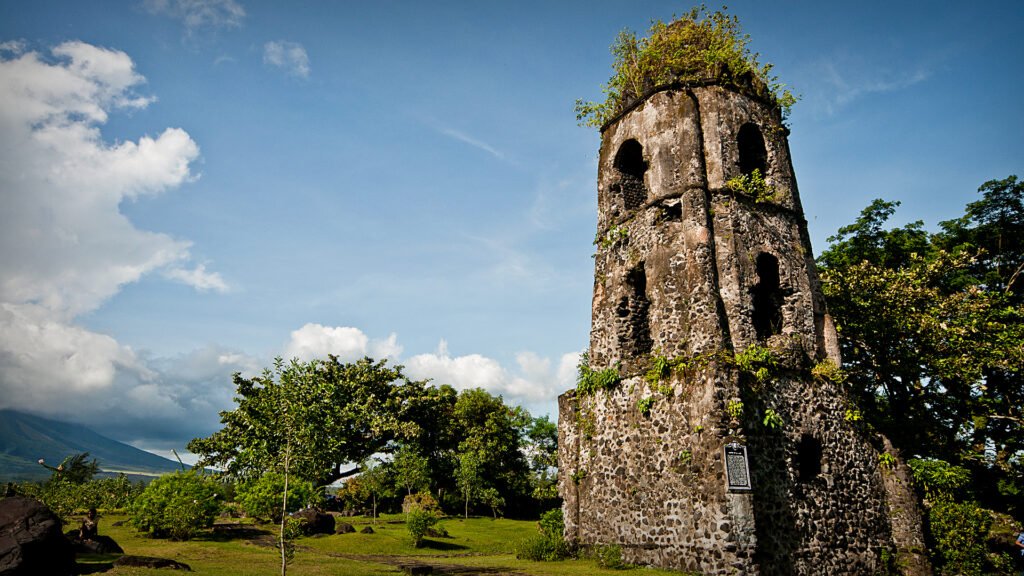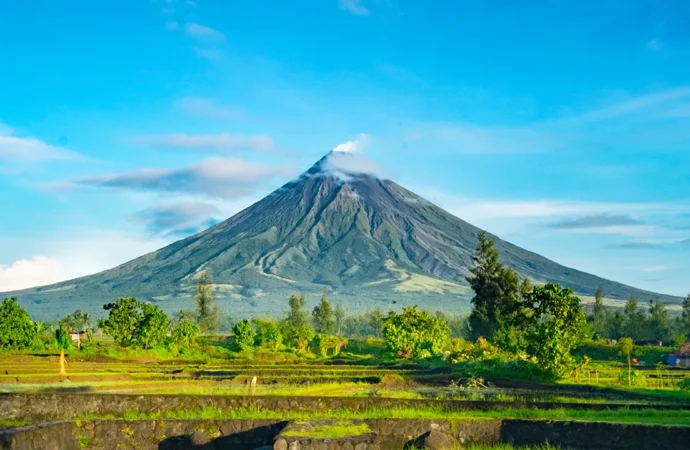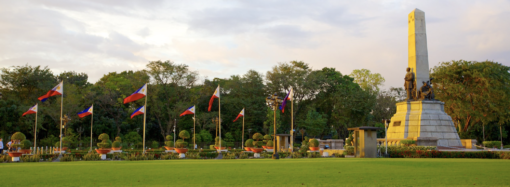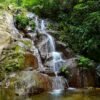In the heart of Bicol Region of the Philippines lies one of the country’s most iconic natural landmarks: Mayon Volcano. Revered for its perfectly symmetrical cone and breathtaking beauty. Thus, Mayon is often dubbed the “perfect cone” due to its near-perfect shape. However, beyond its aesthetic appeal, this active stratovolcano holds a rich geological and

In the heart of Bicol Region of the Philippines lies one of the country’s most iconic natural landmarks: Mayon Volcano. Revered for its perfectly symmetrical cone and breathtaking beauty. Thus, Mayon is often dubbed the “perfect cone” due to its near-perfect shape. However, beyond its aesthetic appeal, this active stratovolcano holds a rich geological and cultural significance. That has captured the fascination of locals and visitors alike for centuries.
The geographical location of Mayon Volcano is that, it is part of the Pacific Ring of Fire. A region known for its high volcanic activity and frequent earthquakes. Standing tall at 2,462 meters (8,077 feet) above sea level, Mayon dominates the surrounding landscape with its majestic presence. What sets Mayon apart from other volcanoes is its remarkably symmetrical cone; formed through a combination of eruptions; and the gradual accumulation of lava and volcanic debris over thousands of years. It is located in the Bicol Region of the Philippines. Yet, It is accessible by both land and air routes, offering travelers multiple options to reach this iconic natural wonder.
Traveling by Land:
- From Manila:
- The most common route from Manila to Mayon Volcano is by bus. Several bus companies operate daily trips from various terminals in Manila to cities in the Bicol Region, such as Legazpi City and Daraga.
- The journey typically takes around 10 to 12 hours, depending on traffic and road conditions. It is advisable to choose a reputable bus company that offers comfortable seating and reliable service.
- From Legazpi City:
- Legazpi City serves as the gateway to Mayon Volcano, located approximately 15 kilometers (9 miles) away from the volcano.
- From Legazpi City, travelers can hire a tricycle or rent a car to reach the nearby towns of Daraga or Cagsawa, which offer stunning views of Mayon.
- Alternatively, organized tours and transportation services are available, providing convenient options for exploring the volcano and its surrounding attractions.
Traveling by Air:
- From Manila:
- Travelers can opt for a faster and more convenient option by flying from Manila to Legazpi City.
- Several airlines operate daily flights from Manila’s Ninoy Aquino International Airport (NAIA) to Legazpi Airport, including Philippine Airlines, Cebu Pacific, and AirAsia.
- Flight duration is approximately 1 to 1.5 hours, making it the quickest way to reach Legazpi City and Mayon Volcano.
- From Legazpi Airport, travelers can take a taxi or arrange for airport transfers to reach their accommodation or directly proceed to explore Mayon Volcano and its surrounding attractions.
One of the most popular vantage points to admire Mayon is the Cagsawa Ruins, the remnants of a 16th-century Franciscan church destroyed during a massive eruption in 1814. Today, the ruins serve as a poignant reminder of Mayon’s destructive power and a popular spot for tourists to capture the volcano’s beauty against the backdrop of history.

For those seeking a closer encounter with Mayon, guided hiking tours are available, allowing visitors to trek through lush forests and volcanic landscapes to reach the volcano’s crater. Also, ATV tour is available. While access to the summit is restricted during periods of volcanic activity, the surrounding trails offer stunning panoramic views of the surrounding countryside and the majestic cone of Mayon.

Mayon Volcano holds a special place in Philippine culture and folklore, serving as a symbol of resilience and beauty. Local indigenous groups, such as the Bicolanos, consider Mayon as a sacred mountain. They believe that it embodies the spirit of the deity Magayon, which means “beautiful” in the local dialect. Beyond its cultural and geological significance, Mayon Volcano is a popular tourist destination, attracting thousands of visitors each year. The surrounding area offers a range of activities for adventure seekers and nature enthusiasts alike, including hiking, camping, and photography.
Through these conservation efforts, Mayon Volcano continues to inspire awe and wonder while serving as a reminder of the powerful forces at work beneath the Earth’s surface. As both a geological marvel and cultural icon, Mayon stands as a testament to the beauty and resilience of the Philippines’ natural landscape. Whether admired from afar or explored up close. Mayon Volcano remains a captivating destination that leaves a lasting impression on all who encounter its majesty.



















Leave a Comment
Your email address will not be published. Required fields are marked with *